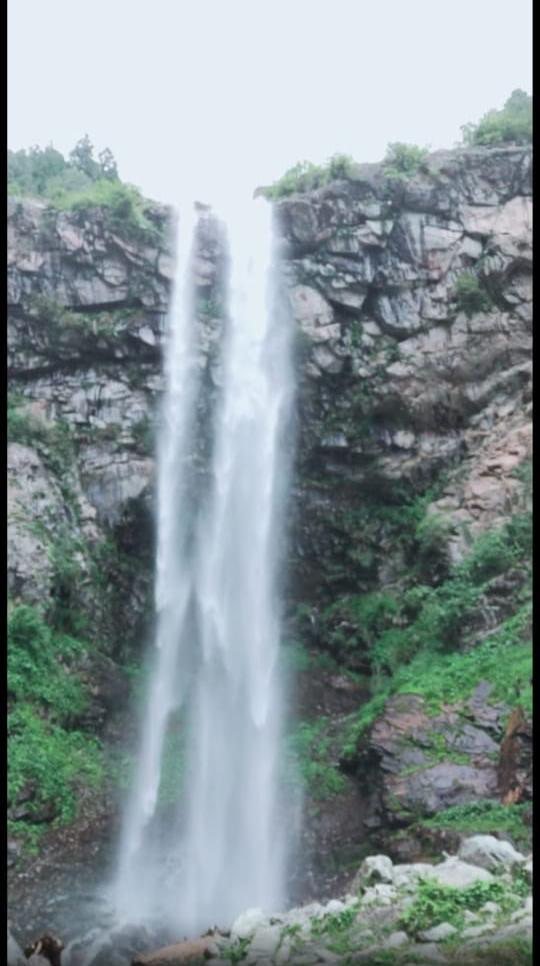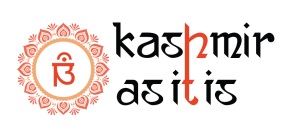~By Mendhardairies ~

Ramkund is the symbol of our ancient culture, art and traditions. This is the oldest temple in Poonch region. As per the Archaeological report, this beautiful temple was built by Raja Lalitaditya (i.e. between 724 AD and 761 AD). The style, architecture and the age of the temple is the same as of those temples built by Raja Lalitaditya in Kashmir. This temple has a very attractive look and a deep past from the religious point of view.
Ramkund temple is located in village Narol of Mendhar tehsil, 62 Km from Poonch and 11 Km from Mendhar. This important religious place is located in a deep gorge at the foothills of Shahstar Range of mountains from all sides. At present, there are three sacred ponds apart from the ancient temple. They are known as Ram Kund, Lachman Kund and Sita Kund. Ram Kund is bigger than Lachman Kund and Sita Kund and a bit elevated from the other two. A spring emerges exactly on the northern side of Ramkund. The water of this spring pours into Ram Kund which overflows to Lachman Kund and at last Sita Kund. The latter is the smallest in size. These kunds have been excavated in such a way that the water of spring after filling all the kunds flows out in nallah. On the eastern side of Ramkund, there is a historical temple of 8th century. A stone stair case begins from the eastern side of Ramkund upto the entrance of the temple. At present, there is an idol of Hanuman which was installed in the temple in the recent past. On the northern side, a small structure houses the residence of a Pujari and a cowshed. A ‘Kutiya’ has also been constructed near the temple for ‘Sadhus’ and pilgrims. The western side of this holy place is surrounded by banana trees and small garden of plums which give this place look of an ‘ASHRAAM’.
A big religious congregation is held on 14th of ‘Chaitra (March) every year and is known as ‘Mela Chetar Chodas’. Devotees from all parts of Poonch and Rajouri districts participate in it. People after taking a dip in the holy water or kunds offer prayers in the temple and take part in ‘Bhajan Kirtan’ organized by the ‘Mandlies’ (Groups). The religious programme continues for one full day. The Chari Mubarak Yatra shall start toward Ram Kund temple, which will be received by Muslim brothers at Chassla and then reach Ram Kund on the same day. Next day, Mela shall be organised in which devotees from Poonch, Surankote, Mendhar, Nowshera, Sunderbani and Jammu are expected to participate.
Religious Background
Once Raja Lalitaditya left for hunting in the jungle and reached this place in the evening. At this very solitary place, he saw in the nearby a girl singing a devotional song while a beautiful girl was dancing in this uninhabited place. When the devotional song was over, both the girls bowed their heads at this place and left. The next day also the same thing happened. Then Raja Lalitaditya came before these girls and enquired from them why they were dancing and singing their devotional song at such a lonely place in the jungle. The girls replied that they were devdasis and doing so on the direction of their mothers and grand mothers. They further said : “This is our traditional job but we do not know the reason of our dancing at this place”. Raja thought that there might have been be a sacred place in the past at that spot.  Next day he ordered for the excavation of that particular place where the devdasis were offering prayer in the evening. After some excavation, two old temples were seen whose doors were shut. When Raja opened the door, he saw that two idols of Keshav were installed there. On the back of these idols, it was engraved that these idols were installed by Ramchander Ji during his visit to Kashmir. Raja Lalitaditya took these idols to Kashmir along with him and he installed the idol of Ram Chander Ji in the temple of Vishnu Parihas in Parhaspur, while the second idol was taken by the Queen and she installed it in Chakrshveri temple.
Next day he ordered for the excavation of that particular place where the devdasis were offering prayer in the evening. After some excavation, two old temples were seen whose doors were shut. When Raja opened the door, he saw that two idols of Keshav were installed there. On the back of these idols, it was engraved that these idols were installed by Ramchander Ji during his visit to Kashmir. Raja Lalitaditya took these idols to Kashmir along with him and he installed the idol of Ram Chander Ji in the temple of Vishnu Parihas in Parhaspur, while the second idol was taken by the Queen and she installed it in Chakrshveri temple.
It appears that while taking the original idols from Ramkund temple, Raja Lalitaditya got renovated or reconstructed the original excavated monument with some additions and converted this place into an important religious shrine.
Symbol of Communal Harmony
It is important to note that Ram Kund is situated in a farflung and remote village Narol in Mendhar tehsil where no Hindu population is residing in and around the village Narol. Only a Pujari is looking after the temple on normal days. However, the Muslim population of the village Narol and surrounding areas give respect to this ancient religious monument.
Disclaimer – KAII does not hold the responsibility for the authenticity of this article. The writer/author of this writeup is responsible for the content displayed. If anyone has any objections, please raise it immediately to admin@kashmirasitis.com with valid reasons.






